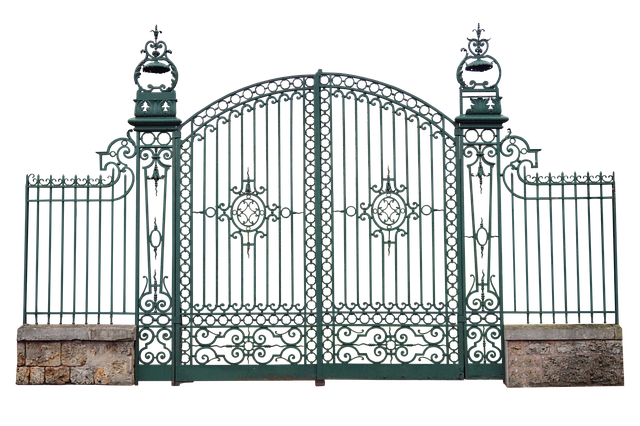Considering a wooden fence for your New Bedford, Massachusetts property? This comprehensive guide explores the entire installation process, from understanding the basics to choosing the perfect design. We delve into the benefits of wood fences, essential preparation steps, and provide a detailed, step-by-step installation guide ensuring a professional finish. Furthermore, we offer valuable tips for post-installation care and maintenance to ensure your new fence lasts.
- Understanding Wooden Fence Installation Process
- Benefits of Choosing Wood Fences for Your Property
- Selecting the Right Type of Wood and Design
- Preparation and Site Assessment for Installation
- Step-by-Step Guide to a Professional Installation
- Post-Installation Care and Maintenance Tips
Understanding Wooden Fence Installation Process
When considering wooden fence installation services in New Bedford, Massachusetts, understanding the process is key. It begins with a consultation where professionals assess your property and discuss design preferences, budget, and timeline expectations. Measurements are taken, and custom plans are created to ensure the fence aligns perfectly with your vision and local regulations.
The actual installation involves skilled labor using high-quality materials. Posts are set, slats are securely fastened, and gates or other accessories are installed. Throughout the process, safety is paramount, and proper tools and techniques are employed to guarantee a sturdy and long-lasting fence.
Benefits of Choosing Wood Fences for Your Property
Wooden fences offer numerous advantages for property owners in New Bedford, Massachusetts. One of their key attributes is aesthetics; wood has a natural beauty that enhances outdoor spaces, providing a warm and inviting ambiance. The versatility of wood allows for various styles and designs to complement different architectural themes, ensuring your fence blends seamlessly with the overall look of your home or garden.
Moreover, wood fences provide excellent privacy and security. They can be installed at varying heights, offering a sense of seclusion while still allowing natural light and airflow. Unlike some materials, wood fences are relatively low-maintenance. Regular cleaning and minimal repairs are usually sufficient to keep them looking their best for many years, providing great value for money.
Selecting the Right Type of Wood and Design
When it comes to wooden fence installation, choosing the right type of wood is a fundamental decision that will impact both the aesthetics and longevity of your fence. New Bedford, Massachusetts, residents have a variety of options to consider depending on their preferences and climate requirements. For example, cedar is a popular choice due to its natural resistance to rot and insects, making it ideal for the local environment. Alternatively, pressure-treated pine offers a more affordable option that still provides durability, though it may require more maintenance over time.
The design of your fence also plays a crucial role in its overall appeal. From traditional picket fences to sturdy privacy panels, each style brings unique character to your property. Consider factors like the height and width of your desired fence, as well as any specific patterns or textures that resonate with your vision. A professional installation service can guide you through these choices, ensuring not only a beautiful but also functional and long-lasting wooden fence.
Preparation and Site Assessment for Installation
Before any wooden fence installation begins, a thorough preparation and site assessment are crucial steps. This involves an initial consultation where experts evaluate your property and specific needs, taking note of unique features like existing structures, trees, or utility lines that might impact placement. They’ll also assess soil conditions to ensure a sturdy foundation for the fence. During this phase, measurements are taken accurately to guarantee the final product aligns perfectly with your vision.
Preparation includes creating a detailed plan, considering local regulations and permits, and selecting suitable materials that match both your aesthetic preferences and climate requirements. This meticulous approach ensures not just a beautiful fence but also one that’s built to last, standing strong against the elements and potential pests.
Step-by-Step Guide to a Professional Installation
A professional wooden fence installation begins with meticulous planning and preparation. First, assess your property lines and choose a fence style suitable for your space and preferences. Different styles include picket fences, privacy fences, or post-and-rail options, each serving unique purposes and aesthetics. Once selected, measure the perimeter accurately to ensure the right materials are ordered.
Next, gather all necessary tools and materials: posts, rails, panels, brackets, concrete for setting posts, and fasteners. Mark the fence line clearly on the ground, ensuring it aligns with property boundaries. Dig holes for the posts, positioning them at the desired height and depth. Set the posts in place, level them, and fill the holes with concrete to secure them firmly. Attach rails and panels according to manufacturer instructions, using brackets for support. Finally, fasten all components securely, ensuring a sturdy and safe fence structure.
Post-Installation Care and Maintenance Tips
After your wooden fence is installed, proper care and regular maintenance are essential to ensure its longevity and preserve its aesthetic appeal. Start by cleaning the fence periodically with a soft brush or garden hose to remove any dirt, debris, or mildew buildup. Use a mild soap solution for stubborn stains, ensuring you thoroughly rinse afterward.
To protect your fence from the elements, apply a fresh coat of high-quality sealant or paint every one to two years, depending on exposure to sunlight and weather conditions. This step will create a protective barrier against water, UV rays, and other environmental factors that can cause wood to rot or fade. Regularly inspect the fence for any signs of damage, such as broken boards or loose posts, and address them promptly to prevent further deterioration.
